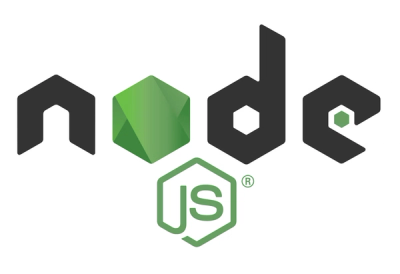
Security News
Node.js Homepage Adds Paid Support Link, Prompting Contributor Pushback
A new Node.js homepage button linking to paid support for EOL versions has sparked a heated discussion among contributors and the wider community.
github.com/ilyakaznacheev/cleanenv
Minimalistic configuration reader
This is a simple configuration reading tool. It just does the following:
To install the package run
go get -u github.com/ilyakaznacheev/cleanenv
The package is oriented to be simple in use and explicitness.
The main idea is to use a structured configuration variable instead of any sort of dynamic set of configuration fields like some libraries does, to avoid unnecessary type conversions and move the configuration through the program as a simple structure, not as an object with complex behavior.
There are just several actions you can do with this tool and probably only things you want to do with your config if your application is not too complicated.
You can read a configuration file and environment variables in a single function call.
import "github.com/ilyakaznacheev/cleanenv"
type ConfigDatabase struct {
Port string `yaml:"port" env:"PORT" env-default:"5432"`
Host string `yaml:"host" env:"HOST" env-default:"localhost"`
Name string `yaml:"name" env:"NAME" env-default:"postgres"`
User string `yaml:"user" env:"USER" env-default:"user"`
Password string `yaml:"password" env:"PASSWORD"`
}
var cfg ConfigDatabase
err := cleanenv.ReadConfig("config.yml", &cfg)
if err != nil {
...
}
This will do the following:
yaml tag in this case);env tag);env-default tag) if it is set.Sometimes you don't want to use configuration files at all, or you may want to use .env file format instead. Thus, you can limit yourself with only reading environment variables:
import "github.com/ilyakaznacheev/cleanenv"
type ConfigDatabase struct {
Port string `env:"PORT" env-default:"5432"`
Host string `env:"HOST" env-default:"localhost"`
Name string `env:"NAME" env-default:"postgres"`
User string `env:"USER" env-default:"user"`
Password string `env:"PASSWORD"`
}
var cfg ConfigDatabase
err := cleanenv.ReadEnv(&cfg)
if err != nil {
...
}
Some environment variables may change during the application run. To get the new values you need to mark these variables as updatable with the tag env-upd and then run the update function:
import "github.com/ilyakaznacheev/cleanenv"
type ConfigRemote struct {
Port string `env:"PORT" env-upd`
Host string `env:"HOST" env-upd`
UserName string `env:"USERNAME"`
}
var cfg ConfigRemote
cleanenv.ReadEnv(&cfg)
// ... some actions in-between
err := cleanenv.UpdateEnv(&cfg)
if err != nil {
...
}
Here remote host and port may change in a distributed system architecture. Fields cfg.Port and cfg.Host can be updated in the runtime from corresponding environment variables. You can update them before the remote service call. Field cfg.UserName will not be changed after the initial read, though.
You can get descriptions of all environment variables to use them in the help documentation.
import "github.com/ilyakaznacheev/cleanenv"
type ConfigServer struct {
Port string `env:"PORT" env-description:"server port"`
Host string `env:"HOST" env-description:"server host"`
}
var cfg ConfigRemote
help, err := cleanenv.GetDescription(&cfg, nil)
if err != nil {
...
}
You will get the following:
Environment variables:
PORT server port
HOST server host
Library uses tags to configure the model of configuration structure. There are the following tags:
env="<name>" - environment variable name (e.g. env="PORT");env-upd - flag to mark a field as updatable. Run UpdateEnv(&cfg) to refresh updatable variables from environment;env-required - flag to mark a field as required. If set will return an error during environment parsing when the flagged as required field is empty (default Go value). Tag env-default is ignored in this case;env-default="<value>" - default value. If the field wasn't filled from the environment variable default value will be used instead;env-separator="<value>" - custom list and map separator. If not set, the default separator , will be used;env-description="<value>" - environment variable description;env-layout="<value>" - parsing layout (for types like time.Time);env-prefix="<value>" - prefix for all fields of nested structure (only for nested structures);There are following supported types:
int (any kind);float (any kind);string;boolean;time.Duration;time.Time (layout by default is RFC3339, may be overridden by env-layout);*time.Location (time zone parsing depends on running machine);encoding.TextUnmarshaler;cleanenv.Setter interface.To enhance package abilities you can use some custom functions.
To make custom type allows to set the value from the environment variable, you need to implement the Setter interface on the field level:
type MyField string
func (f *MyField) SetValue(s string) error {
if s == "" {
return fmt.Errorf("field value can't be empty")
}
*f = MyField("my field is: "+ s)
return nil
}
type Config struct {
Field MyField `env="MY_VALUE"`
}
SetValue method should implement conversion logic from string to custom type.
You may need to execute some custom field update logic, e.g. for remote config load.
Thus, you need to implement the Updater interface on the structure level:
type Config struct {
Field string
}
func (c *Config) Update() error {
newField, err := SomeCustomUpdate()
f.Field = newField
return err
}
There are several most popular config file formats supported:
.yaml, .yml).json).toml).edn).env)Note:
.env file the library will set corresponding data to process environment variables.
It will override existing variables with the same keys in the process environment.The package can be used with many other solutions. To make it more useful, we made some helpers.
You can use the cleanenv help together with Golang flag package.
// create some config structure
var cfg config
// create flag set using `flag` package
fset := flag.NewFlagSet("Example", flag.ContinueOnError)
// get config usage with wrapped flag usage
fset.Usage = cleanenv.FUsage(fset.Output(), &cfg, nil, fset.Usage)
fset.Parse(os.Args[1:])
type Config struct {
Port string `yaml:"port" env:"PORT" env-default:"8080"`
Host string `yaml:"host" env:"HOST" env-default:"localhost"`
}
var cfg Config
err := ReadConfig("config.yml", &cfg)
if err != nil {
...
}
This code will try to read and parse the configuration file config.yml as the structure is described in the Config structure. Then it will overwrite fields from available environment variables (PORT, HOST).
For more details check the example directory.
We support the last 7 versions of Golang. E.g. if the current version is 1.19, we test compatibility with all versions from 1.19 to 1.13.
If you use an older version of Golang in your project, please use an older library version.
The tool is open-sourced under the MIT license.
If you find some error, want to add something or ask a question - feel free to create an issue and/or make a pull request.
Guidelines for contribution may be found in CONTRIBUTING.md.
Any contribution is welcome.
Big thanks to a project kelseyhightower/envconfig for inspiration.
The logo was made by alexchoffy.
FAQs
Unknown package
Did you know?

Socket for GitHub automatically highlights issues in each pull request and monitors the health of all your open source dependencies. Discover the contents of your packages and block harmful activity before you install or update your dependencies.

Security News
A new Node.js homepage button linking to paid support for EOL versions has sparked a heated discussion among contributors and the wider community.

Research
North Korean threat actors linked to the Contagious Interview campaign return with 35 new malicious npm packages using a stealthy multi-stage malware loader.

Research
Security News
The Socket Research Team investigates a malicious Python typosquat of a popular password library that forces Windows shutdowns when input is incorrect.